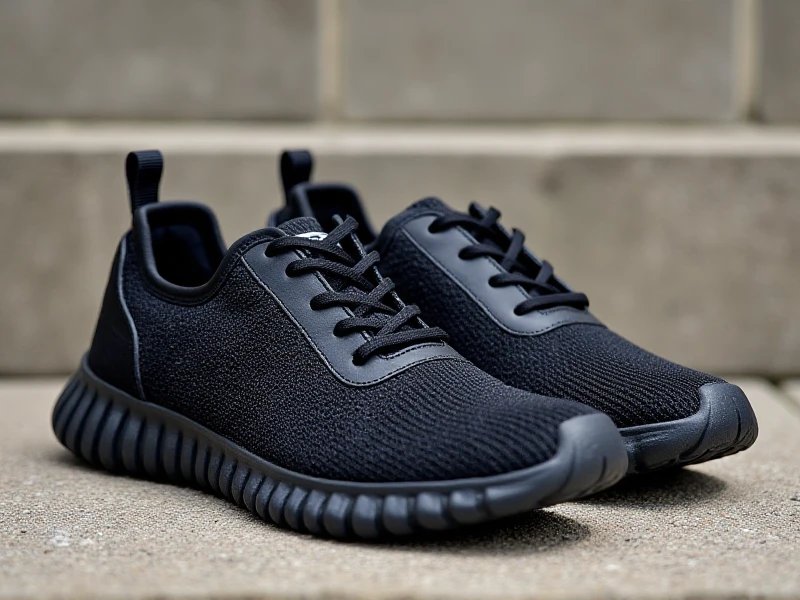Your Complete Guide to Choosing the Best Men's Running Shoes for Every Run
2025-06-04

As the popularity of running surges, finding the right pair of men's running shoes can make all the difference in your performance. Whether you're tackling your first 5K, training for a marathon, or enjoying a casual jog, high-quality shoes not only enhance comfort and efficiency but also reduce the risk of injury. This guide dives deep into the essentials of men's running shoes, helping you navigate the options, assess your needs, and score a pair that feels like it was made just for you. Let's lace up and explore how to turn your runs into triumphs.
Understanding the Basics of Men's Running Shoes
Men's running shoes are engineered specifically for the biomechanics of male runners, focusing on support, cushioning, and durability. Unlike casual sneakers, they feature advanced soles to absorb impact and propel you forward efficiently. Key components include the upper mesh for breathability, the midsole for shock absorption, and the outsole for optimal traction. By prioritizing footwear designed for running, you'll notice quicker recovery times and fewer aches, whether you're hitting the pavement or trails.
The first step to selecting the best men's running shoes is knowing your running style and foot type. Analyze your gait—whether you pronate (inward roll) or supinate (outward roll)—to choose shoes with appropriate stability. For overpronators, stability or motion-control shoes offer extra arch support to prevent ankle issues. Neutral runners, with a more centered stride, benefit from cushioned shoes that provide flexibility without overcorrection. Try a simple test like the "wet foot" method: step on a dry surface after wetting your feet to see your footprint. A high arch suggests neutral support, while a nearly full print indicates lower arches needing more stability.
Top Categories and Features to Consider
When browsing men's running shoes, key categories cater to different terrains and intensities. Road running shoes emphasize light, responsive cushioning for hard surfaces like sidewalks, making them ideal for daily training. Models like those with air or gel cushioning distribute impact evenly, keeping your feet fresh over long distances. Trail running shoes, on the other hand, boast rugged outsoles for grip on uneven paths, plus waterproof features to withstand the elements. These often have reinforced toe caps to protect against rocks and roots. Lightweight racers are another subset, favored by competitive runners for their minimal weight and snug fit in speed-focused events.
Pay attention to specific features that elevate your experience. Breathable mesh uppers prevent overheating and blisters, especially during summer runs. Reflective elements enhance safety for low-light outings. Consider midsole technologies like EVA foam or proprietary compounds that adapt to your stride for a personalized ride. Durability is crucial—look for rubber outsoles that resist wear and tear, extending your shoe's lifespan. Aim to replace your men's running shoes every 300-500 miles to maintain peak function and avoid hidden wear that could lead to strain.
How to Find Your Perfect Fit
Achieving the perfect fit isn't about settling—it's about meticulous measurement. Start by measuring your feet at the end of the day when they're slightly swollen, using a foot-sizing tool for accuracy in length and width (most men need at least 0.5-1 size bigger than their casual shoes). Try shoes on with the socks you usually run in, and aim for a thumbnail's space at the toe to prevent crowded toes and chafing. Pay special attention to arch support: flat-footed runners might seek high-support soles, while others prefer neutral builds. Trying multiple brands in-store or ordering from retailers with easy returns ensures you don't stick with discomfort.
Incorporate flexibility into your fit process. Bend the shoe at its midpoint to ensure it accommodates natural foot movement without stiffness. Run or hop in place during try-ons to test bounce and support. Remember, a great pair of men's running shoes should feel comfortable from mile one—no "break-in period" needed. Top brands to explore include Asics for all-around stability, Nike for innovative cushioning, and Brooks for custom-fit options that suit everything from sprints to ultra-marathons. These offer models at various price points, so prioritize long-term value over initial savings.
Why Investing in Quality Matters
Opting for premium men's running shoes yields tangible benefits beyond comfort. Enhanced cushioning techniques reduce stress on knees and hips, which can prevent common injuries like shin splints or plantar fasciitis. Performance-boosting builds help maintain form and efficiency, translating to faster times and longer endurance. Plus, durable construction offsets costs by lasting through months of intense workouts. Consider this: a study found that runners with proper shoes reported 20% less fatigue and better recovery rates.
Caring for your men's running shoes extends their life and performance. Air them out after each run to prevent bacterial smells from sweat—avoid leaving them in damp bags. Rotate between two pairs to distribute wear evenly. Wash them gently by hand with mild soap and cold water; don't throw them in the washing machine, which can degrade materials. For storage, keep them in a cool, dry spot away from direct sun to maintain shape. This routine ensures your investment stays reliable for hundreds of miles.
In summary, the journey to selecting outstanding men's running shoes involves assessing your needs, exploring features, and prioritizing fit. Whether you're a trail blazer or a road warrior, the right shoes transform running from a chore to a joy. Ready to elevate your stride? Explore trustworthy options from reputable brands and start your next run with confidence—you'll notice the difference instantly. (Word count: 823)
Category: